Safe Use of Hazardous Substances
UK CLP Regulations
Various products and substances are used in managing honeybee colony health and hygiene including many that are hazardous not only to you but also to your bees and the environment. The effects of exposure to these hazardous substances during normal beekeeping activities can result in critical damage to internal organs and cause long term serious illness. Products, substances and their packaging is always clearly marked in accordance with strict UK Classification, Labelling and Packaging regulations (CLP).
Always:
- Read and follow the manufacturers instructions and advice for safe use before application.
- Wear the correct PPEs recommended on the product safety information.
- Store products safely and securely when not in use.
- Dispose of products in line with manufacturers recommendations and local regulations
Product packaging is always clearly marked with written information identifying what substance it contains, what hazards are associated with it and its use, what its intended use is, what precautions need to be taken (e.g. PPE), and a description of first aid measures. Besides written information there will be pictogram signage to ensure hazards are clear to see and identify. Hazardous substance packaging will also carry a tactile raised hazard warning.
GHS Pictograms
The UN Globally Harmonised System (GHS) aims to make all Classification, Labelling and Packaging (CLP) of Substances harmonised the world over to reduce confusion and aid risk reduction measures. Easy to understand Hazard pictograms alert us to the presence of a hazardous chemical. The pictograms help us to know that the chemicals we are using might cause harm to people or the environment. The UK CLP hazard pictograms appear in the shape of a diamond with a distinctive red border and white background. One or more pictograms might appear on the labelling of a single chemical.
Pictograms Explained
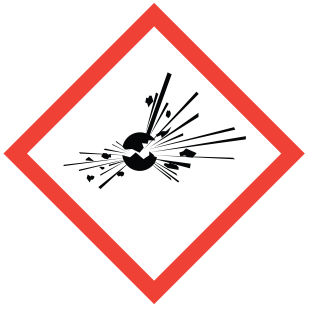 |
GHS01 - The Explosive pictogram indicates substances that are: solid or liquid chemicals capable of an explosive chemical reaction that causes damage to the surroundings; self reactive and heating which may cause fire or explosion without the need for oxygen; organic peroxides which can heat and cause fire or explosion. |
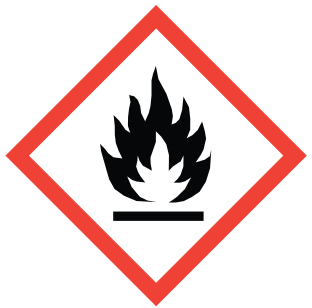 |
GHS02 - The Flammable pictogram appears on chemical labels for substances that are: flammables which may be gases, aerosols, liquids, or solids that will burn or ignite under certain conditions; self reactive and heating without oxygen which may cause fire or explosion; pyrophorics in small amounts which may ignite within minutes after contact with air; self heating which may catch fire only in large amounts and after long periods of time when exposed to air/oxygen; emitters of flammable gas; organic peroxides which when heated may cause fire or explosion and may be sensitive to impact or friction and may react dangerously with other chemicals. |
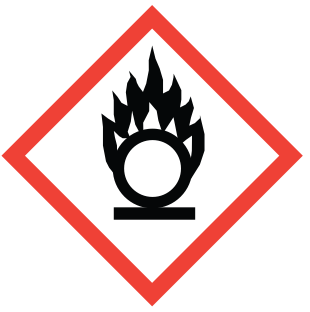 |
GHS03 - The Oxidizing pictogram (a flame over a circle) on a chemical label means that the substance is an oxidizer. Oxidizers may cause a fire by increasing the concentration of oxygen in the air. |
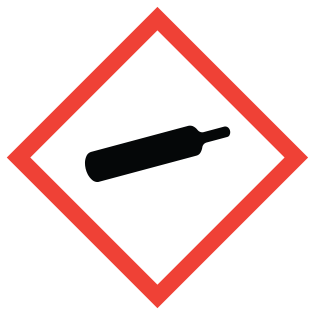 |
GHS04 - The Compressed Gas cylinder pictogram on a chemical label means that the substance is a compressed, liquefied, or dissolved gas under pressure at 29 pounds per square inch or more. |
 |
GHS05 - The Corrosive pictogram on a chemical label means that the substance causes skin burns, eye damage, or destroys metals. |
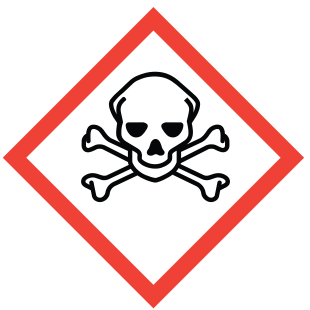 |
GHS06 - The Toxic pictogram (skull and cross bones) indicates a hazardous substance with 'acute toxicity' meaning that exposure to a single dose of the chemical may be toxic or fatal if inhaled or swallowed, or if it comes into contact with the skin. |
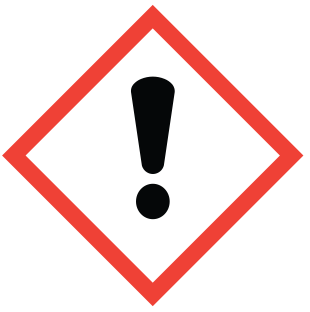 |
GHS07 - The Harmful pictogram is used on a chemical label for substances that present the following hazards: irritants to the skin or eyes; skin sensitizing, which is an allergic response following skin contact; acute toxicity which may be fatal or cause organ damage from a single short-term exposure; narcotic effects like drowsiness, lack of coordination, and dizziness; respiratory tract irritation. |
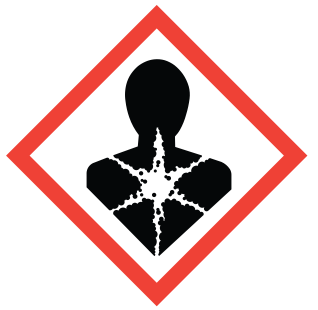 |
GHS08 - The Health Hazard pictogram is used on a chemical label when a substance presents these health hazards: carcinogen which may cause cancer; respiratory sensitizer which may cause respiratory irritation; reproductive toxicity which may damage fertility or an unborn child; target organ toxicity which may cause damage to bodily organs; mutagenicity which may cause genetic defects; aspiration toxicity which may be fatal if swallowed and it enters the airways. |
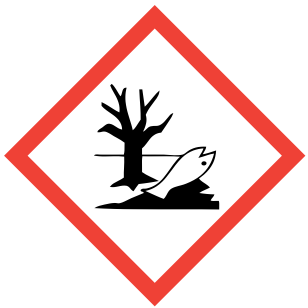 |
GHS09 - The Environment Hazard pictogram is used on a label when a substance is toxic to the environment especially aquatic life. |
Personal Protective Equipment
Safety information included with hazardous substances includes 'Exposure Controls and Personal Protection' recommendations. These are quite specific and care must be taken to use the correct equipment to ensure protection and avoid exposure and cross-contamination. For example ordinary leather beekeeping gloves are not suitable hand protection where natural rubber, neoprene, nitrile, or PVC gloves are specified as beekeeping gloves will absorb the chemical which can then permeate through to the skin, or transfer to non target surfaces. The same applies to masks e.g. the ordinary FFP2 dust (particulate) mask recommended for use with Oxalic Acid Di-Hydrate only affords respiratory protection from exposure to the powder/crystals but does not afford protection from the clouds of toxic vapours released when the substance is sublimated. In that instance a half or full FFA1P2 RD mask respirator is required, they afford protection against organic vapours with a boiling point greater than 65 °C, inorganic vapours, and acid gases.
When using 60% - 85% formic acid evaporators the FFA1P2 RD is suitable for use along with eye protection out in the open. Where used indoors or when concentrations are high a full face organic vapour respirator may be necessary.
Mask Respirator
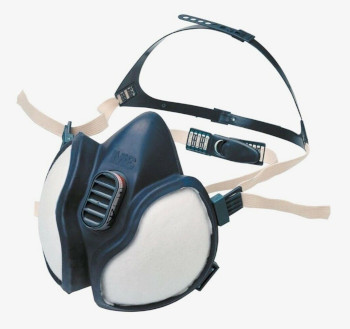
A simple lightweight maintenance free FFA1P2 RD half face mask respirator, lasts for approx 40 hours use, cost around £20. Half face mask respirators with renewable filter cartridges cost in the region of £50 each and £10 per replacement filter pack.
About the 'My Beekeeping Kit' website.
Contact Iain Dewar for enquiries, suggestions, corrections and contributions for improving the notes. Always welcome!